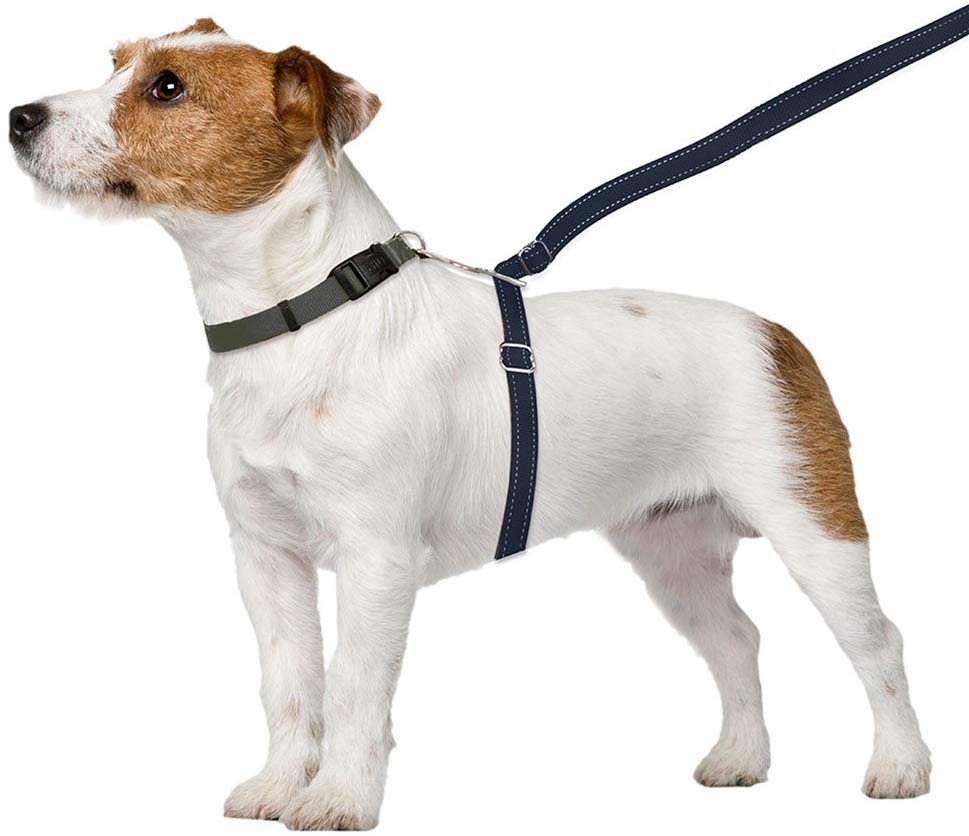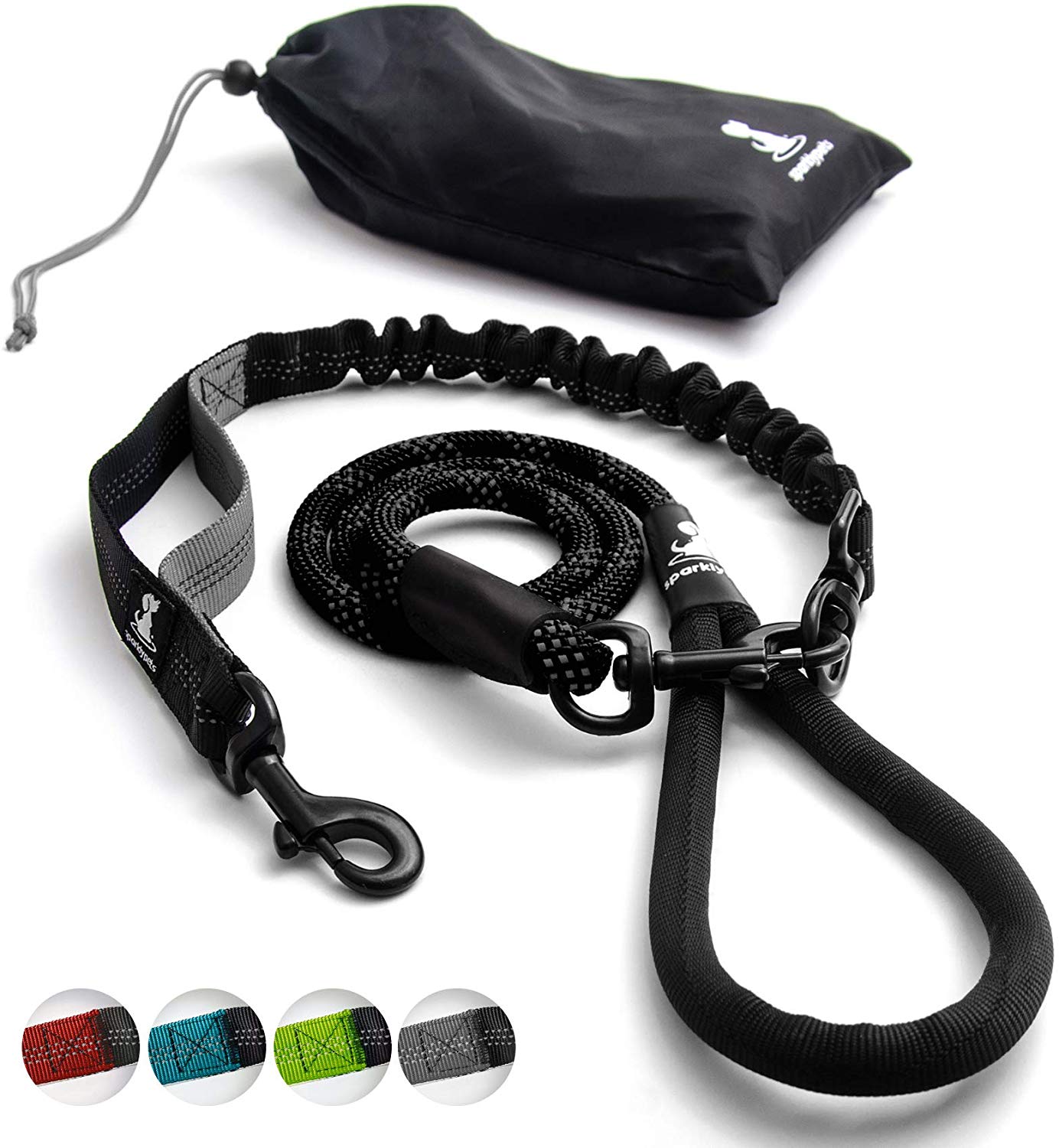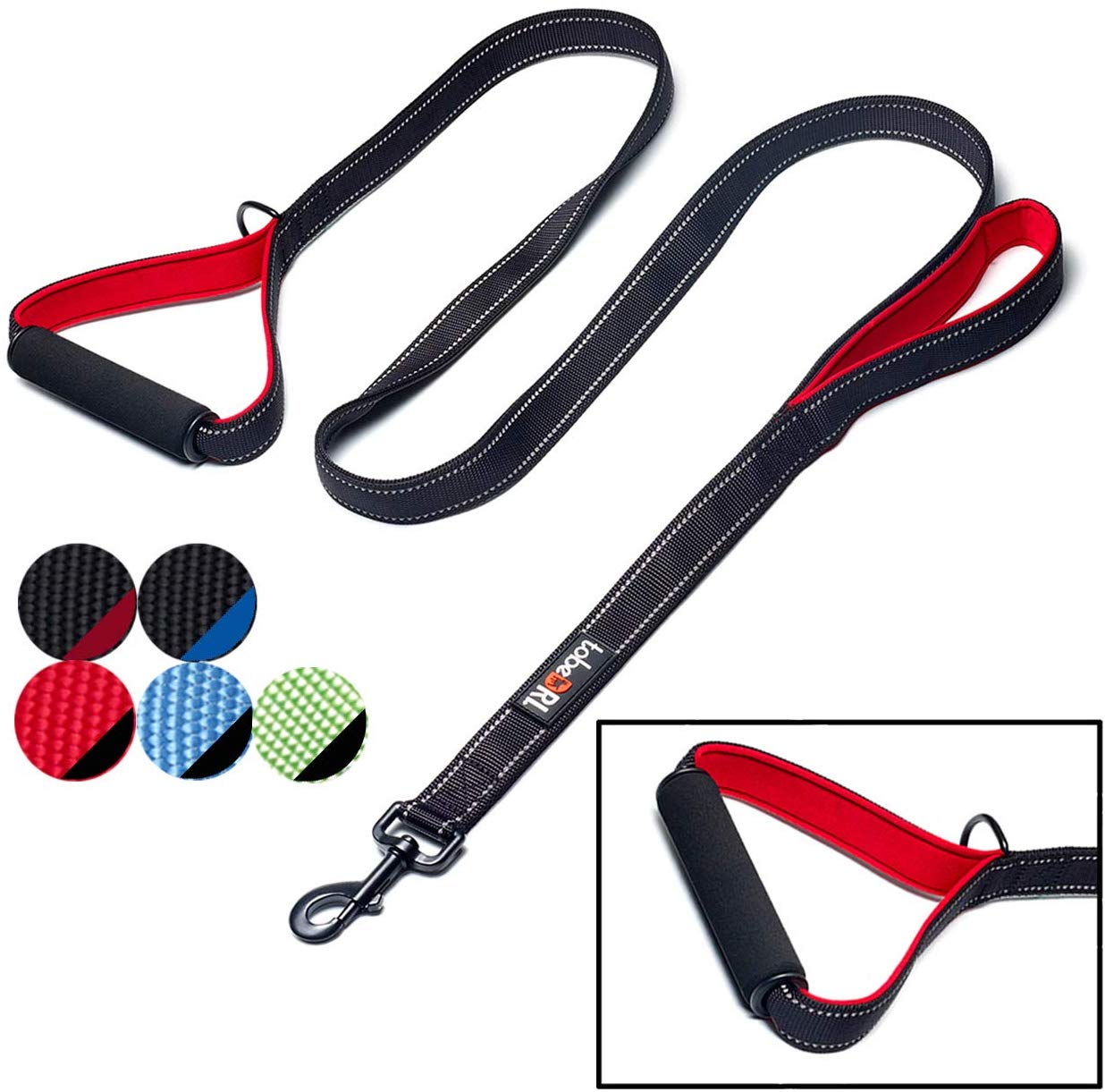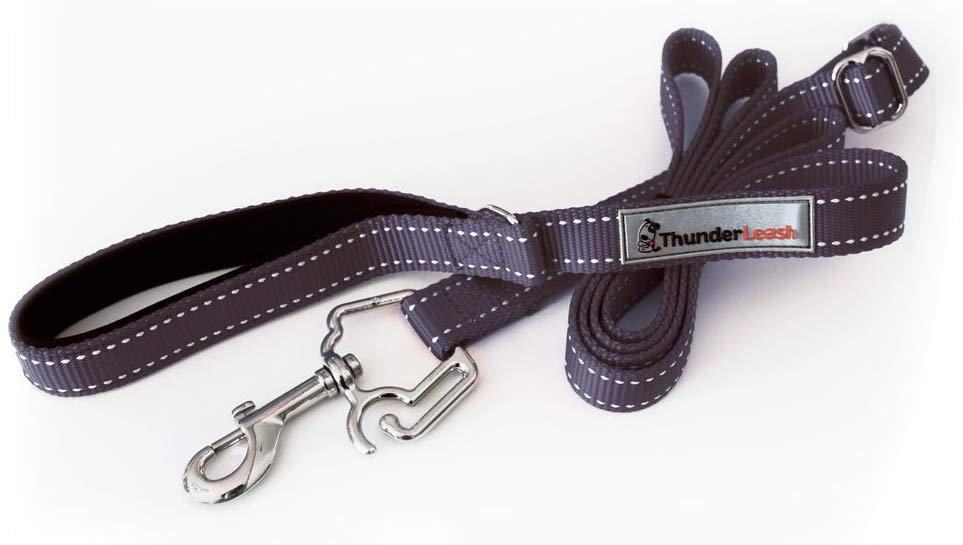Best No Puller Dog Leashes For Dogs That Pull
Finding the right leash for dogs can be trickier than you might think. Sometimes, you need to have a reliable leash because you have an over-excitable dog. Sometimes, your dog is just too stubborn to keep in control. In these situations, you need to work on finding the best dog leash for pulling. With a heavy-duty leash, you'll feel more comfortable while walking your dog because you know it can take all the pulling from your energetic furry friend.
A broken leash in a public place can wreak havoc, especially when your dog becomes over-excited or gets angry because he's a territorial animal that doesn't stand another male dog come near him. Here are a few heavy-duty dog leashes for pullers to help you keep everything under control.
The Best Dog Leash for Pullers: Our Top Picks
1. ThunderLeash No Pull Solution
It is among the oldest leashes for dogs that pull, but it is the most popular too because it applies gentle pressure on the torso of your dog. The use of heavy-duty nylon means you won't experience any problem in terms of durability and quality.
Thanks to its construction, it can deal with a powerful puller as well and is quite suitable for dogs above 25 lbs. The buckle is made from stainless steel, so no need to worry about rust or corrosion. It is quite easy to use because you can fit it in the D-Ring of any dog collar.
Overall, the leash works quite well and comes with a money-back guarantee. But keep in mind that though the design is good, it may still apply some pressure on your dog's trachea; however, it is not high enough to cause choking.PROS
CONS
2. SparklyPets Heavy Duty Rope
This multi-material leash may not look that strong but make no mistake about its strength and durability. It features a braided nylon rope, which is quite thick and is capable of dealing with a strong puller.
It comes with a steel clasp, which is made of black-coated steel, so you don’t really need to worry about it getting damaged over time. But, remember that you will have to use bungee attachment to make it work. The handle is quite strong too, so people who are not that strong can still use it effectively.
Overall, it delivers good performance, but keep in mind that if your dog is a serious chewer, there is a possibility he can damage the bungee cords. Moreover, some people believe that the clasp could've been thicker to feel more secure. Nevertheless, the leash works great if you have a small, over-excited dog.
PROS
CONS
3. TobeDRI Dog Leash
Made up of two layers, this flat nylon leash is much stronger than it looks. Because of its design, there is a loop in the middle that you can also use as an extra handle to control your dog.
It uses two layers one of which is made from a reflective material, so it works great if you walk your dog in low-light conditions. The use of a black coated clasp means the leash will continue to serve you without being affected by weather conditions.It is quite easy to use, and the soft foam handles make it quite comfortable too. The only issue is that your dog might chew on the soft neoprene foam. If that's not the problem with your dog, you can surely consider choosing this no-pull dog leash.
PROS
CONS
FAQ - A Buyer's Guide
How Do You Stop a Dog Pulling on the Lead?
In order to learn how to stop a dog from pulling on the lead, you need to learn the reason why he does that in the first place. It's just like preventing a dog from barking unnecessary – before using a bark collar or something, you should first work on finding what triggers barking and then eliminate those triggers to see how it helps. Similarly, you have to educate yourself about dog pulling on the leash, and the first thing you should know is that they don't do it on purpose.
It means that know your dog doesn't pull just to make you mad – there has to be something inspiring those emotions in him. Does he get excited after seeing other dogs? Does he find it hard to ignore squirrels and other animals? Eliminating these triggers or finding a more peaceful environment while walking may help keep your dog calm and prevent pulling.
Helping your dog to have enough exercise is important to prevent so many behavioral issues, including pulling on the leash. Here are some other things you need to know in order to deal with dog pulls.
- Have a better plan of action. When you find your dog pulling, you shouldn't just stop him but also replace that behavior with something else. It means you should know what you'd want your dog to do instead of pulling. In this case, you can replace that behavior with calmness and eagerness to walk nicely beside you.
- Use rewards whenever you can. Understand that rewards can go a long way towards correcting old behaviors and teaching new ones too. You should reward your dog every time he pays attention to you and walks nicely on a dog leash. Make walking next to you a pleasant and rewarding experience for him. Once he gathers that, it will be a smooth walk with no pulling whatsoever. To get his attention, be sure to use what he loves – opt for special treats like roasted beef or boiled chicken to develop a routine.
- Play useful games. A good idea is to try the "follow me" game. Here, you should simply take a few steps back while walking your dog. Be sure to keep the leash in your hand but don't say anything. Let your dog turn and follow you. When does so, be quick to appreciate that and reward with a treat. The whole idea is to make your dog realize that walking by your side will earn him nice rewards. Doing it often will push your dog to actively pursue you every time you move away and that will help a great deal with leash pulling.
- Look for additional support. It means that along with trying simple training tactics, you should also use all the equipment and tools you can find. For instance, using high-quality leashes will help – they don't have to be retractable leashes but they should be long and durable. Similarly, you can try harness for dog that comes with a front clip. They provide you with additional control while walking your dog. And of course, if a no pull dog harness doesn't work as expected, you may want to work with a positive reinforcement-based trainer to help you out.
Dog Harness: How to Put On to Prevent Pulling?
You can try a number of strategies to deal with dogs that pull. However, using a chest-led harness is usually a great training aid. It works great even if you don't have a large dog breed but you know he can be extremely excited during walks. Even when you use the best dog leash for pullers, you always run the risk of putting extensive pressure on your pet's sensitive neck. Using a harness will help distribute the pressure through the body and allow you to use more force to control a puller.
In case you're going to use a harness for the very first time, here's how to proceed:
- Get that new harness, take it out of the package, and leave it on the floor for your furry friend to sniff it and check it thoroughly.
- While he's exploring the harness, be sure to throw a few treats towards him. The idea is to lure him towards the harness and know it's something for him only.
- Once your dog gets comfortable, you may consider introducing the harness.
- If you're using an overhead harness, you may use a treat to lure his head through the hole. Don't leave it there yet. Take it off immediately and reward him. Then, repeat the same several times.
- If you're using a step-in harness, leave it on the floor and use a treat to make him walk over it. Then, reward and repeat the same several times.
- After a few attempts, you can try to fix the first part of that harness on his body. Be sure to reward again.
- Then, secure the clips and reward again.
- Now, let your dog roam around the house in the harness to ensure he gets use to it. If everything seems fine, you can then think of attaching the leash.
- Even after securing the best leash for dog that pulls, walk him around your house first and be sure to reward intermittently.
- If it feels that he has accepted the harness, you can then venture out, hoping that everything goes as planned.
How to Walk a Dog that Pulls?
In order to leash train your dog, you need to keep several important points in mind. Know that it will be a test of your patience to teach your dog leash manners. Here's how to walk a dog as effectively as possible.
Start by investing in a front-attachment harness or at least a head collar to ensure he doesn't pull. You should also use a heavy-duty leash, which should be 10-20ft long. Remember, a harness and leash won't work wonders on their own but you will have to teach your dog to be disciplined while walking. Every time your dog starts pulling, you should not move forward and stop immediately. He should stop as well and come by your side. If he does that, reward him and start again.
You can practice walking and teach your dog leash manners by first walking him inside your home and yard. Try to walk randomly around your yard and maintain a good pace. If your dog stays by your side, reward him. Remember, you will first have to reward him often but you can then stop doing it once he gets used to it and learn the right way to walk on a leash.
Now, take him out and practice those skills again. If you notice your dog lagging behind, slow down and let him catch up. If he tries to pull, stop when you notice the leash becoming tight. He should come towards you, but if that doesn't happen, apply some leash pressure, but ensure you're not pulling him towards you. If he comes towards you, praise him and reward him when he is by your side again. Keep practicing this.
In case you notice your dog walks ahead of you and even crosses in front of you, sometimes leash pressure is not going to be enough. You may shuffle your feet a bit to ensure he realizes you're here and you're the boss.
Finding the Right Leash to Learn How to Stop Dog from Pulling on Leash?
You have already gathered the fact that some dogs are natural pullers, but you can still change this behavior with some training. While treats and rewards are important, you need to have a reliable harness and leash with you to ensure that your over-excited dog doesn't get away and hurt someone in the process. Here are a few things to check when buying a dog leash for pullers:
Consider the Size: It's not a good idea to buy a one-size-fits-all leash for a strong puller. You need to ensure that the leash and harness are snug or else the dog won't get the feedback needed to keep him from pulling. To buy a harness, you should take the measurement of your dog's torso around his chest and then buy accordingly.
Pick the Right Design: You can find a variety of designs on the market, but most people would buy a no pull dog leash – others would want to put their money on a harness integrated into a leash. Whatever you choose depends on your own preferences because both work equally well if you know how to use them properly. Choosing one with an integrated vest is often a good idea for a powerful puller because you can use some force and ensure that your dog gets turned to the side instead of pulling ahead.
Conclusion
It is important to work on teaching your overexcited puppy or a powerful puller some leash manners, and that can take some time and patience. Finding the best dog leash for pulling or a no-pull dog harness can be a bit tricky but you can make a good decision considering the size of your dog and the quality you want. Therefore, you should get the best leash and work on training your dog to have a well-mannered pet while going out.




